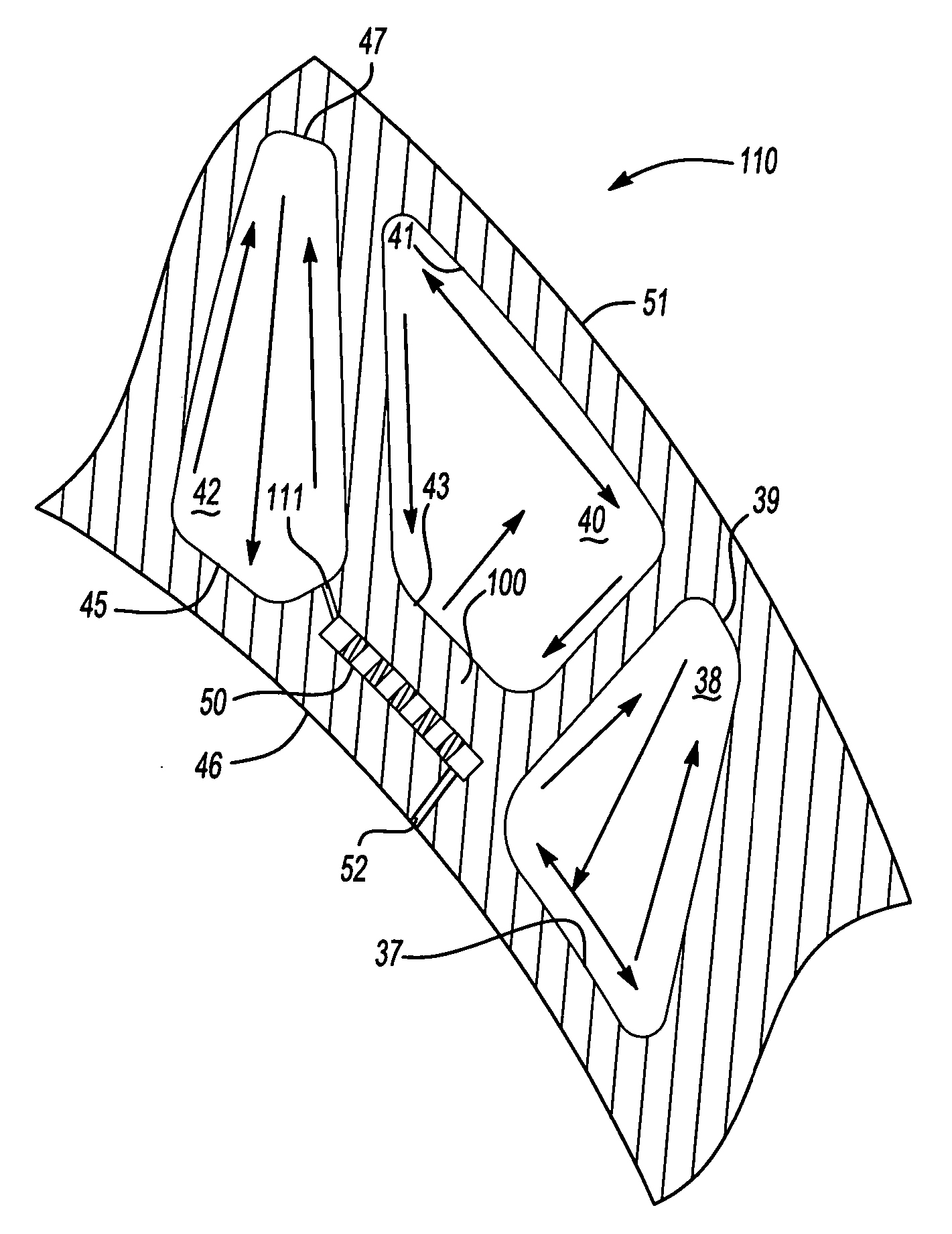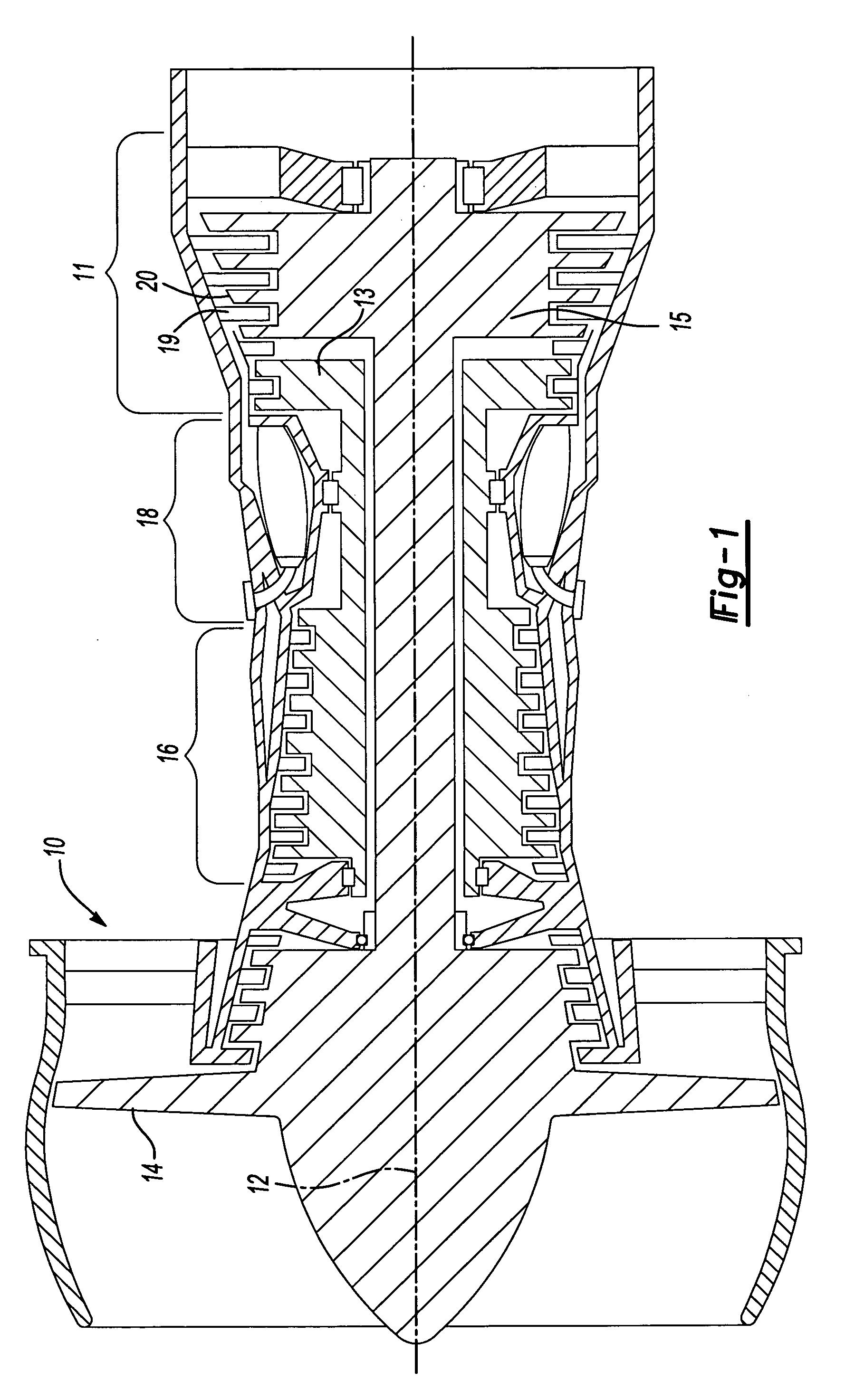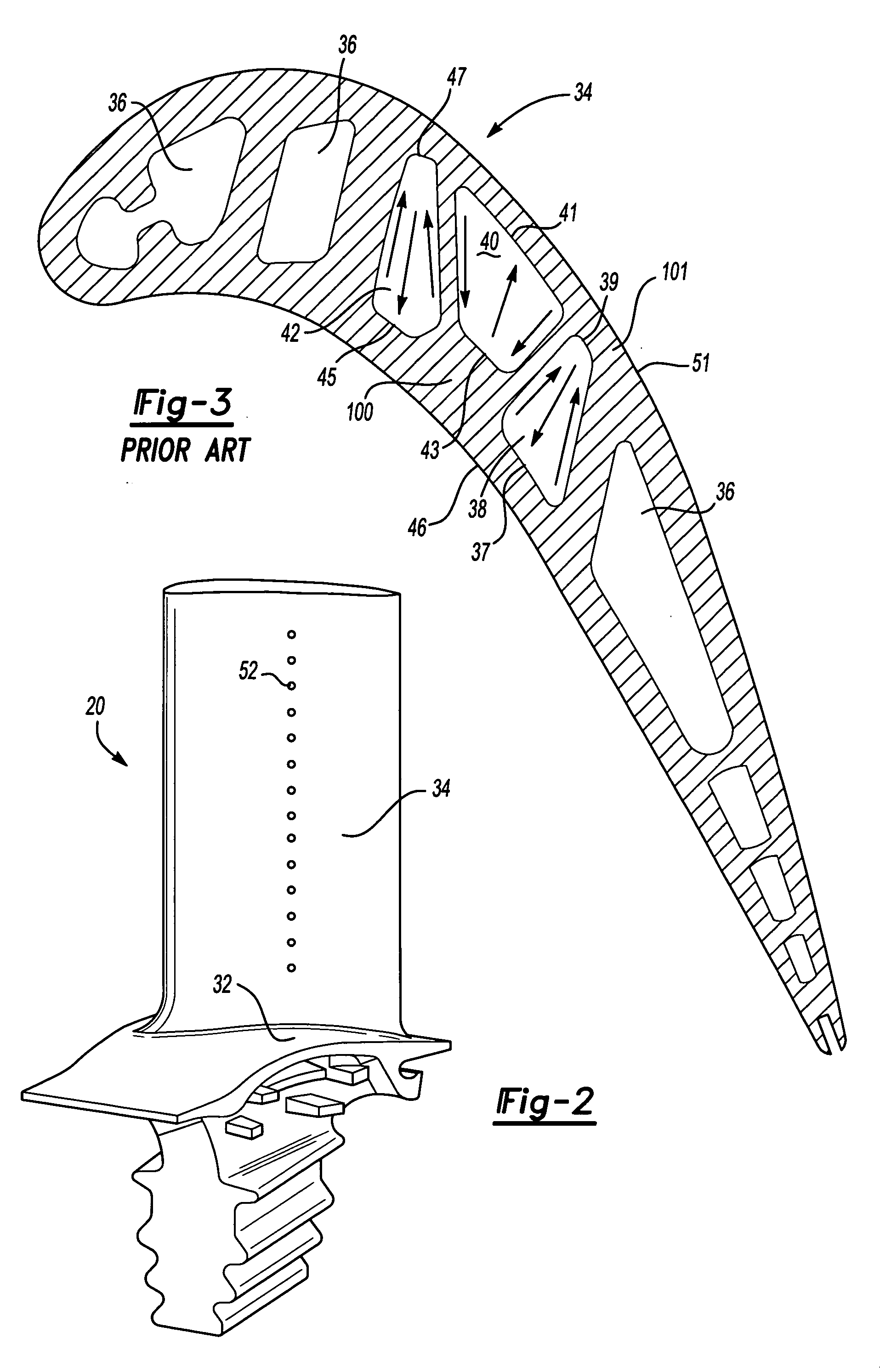Airfoil with three-pass serpentine cooling channel and microcircuit
a cooling channel and airfoil technology, applied in the direction of machines/engines, mechanical equipment, liquid fuel engines, etc., can solve the problems of less cooling efficiency, less cooling surface area of the wall adjacent the smaller side of the trapezoid, and relatively high mechanical and thermal stress
- Summary
- Abstract
- Description
- Claims
- Application Information
AI Technical Summary
Benefits of technology
Problems solved by technology
Method used
Image
Examples
embodiment 150
[0035]FIG. 7 shows another microcircuit embodiment 150 wherein the microcircuit is positioned in the area 101 between the smaller side 39 of the path 38 and the suction wall 51. Here again, an inlet passage 154 communicates cooling air from another of the serpentine channel paths 40. Pedestals 152 are placed within the microcircuit 150, and an exhaust port 160 communicates film cooling air to the suction wall 51. The embodiment of FIG. 7 would preferably include a plurality of spaced microcircuits 150 similar to that shown in FIG. 6.
[0036] The detail of the microcircuit can have many distinct shapes, positions, spacings, etc., and varying numbers of entry / exhaust passages per microcircuit, and relative shapes and sizes of the pedestals. Several available options are described below, however, these are merely exemplary. That is, the microcircuits 50 of FIG. 5 and the microcircuits 150 of FIG. 7 can have the configuration of FIG. 8 or 9, or some other configuration. For purposes of th...
first embodiment
[0057] Advantageously, the positioning of the pedestals 396, as described above, permits very good metering control of the cooling air as it exits through the respective exit aperture 52. More specifically, as the cooling air passes through rows 382 and 384, the air impinges onto the pedestals 396 and is directed around the pedestals to exit through the corresponding exit aperture 52. Also, in this way and as shown by the streamlines, 0, 1, 1′, the main streamline 0 provides for uniform flow distribution out through the exit aperture 52. That is to say, the streamlines 1 do not cross with the streamlines 1′ and visa versa. The main streamline, 0, like that of the first embodiment shown in FIG. 8, is generally aligned with the center of the corresponding exit aperture 52. However, in the alternative embodiment, the pedestals 396 are aligned with the exit aperture 52 such that the majority of the length, L3, of the pedestals 396 are exposed to the exit aperture 52. As such, the stream...
PUM
 Login to View More
Login to View More Abstract
Description
Claims
Application Information
 Login to View More
Login to View More - R&D
- Intellectual Property
- Life Sciences
- Materials
- Tech Scout
- Unparalleled Data Quality
- Higher Quality Content
- 60% Fewer Hallucinations
Browse by: Latest US Patents, China's latest patents, Technical Efficacy Thesaurus, Application Domain, Technology Topic, Popular Technical Reports.
© 2025 PatSnap. All rights reserved.Legal|Privacy policy|Modern Slavery Act Transparency Statement|Sitemap|About US| Contact US: help@patsnap.com



